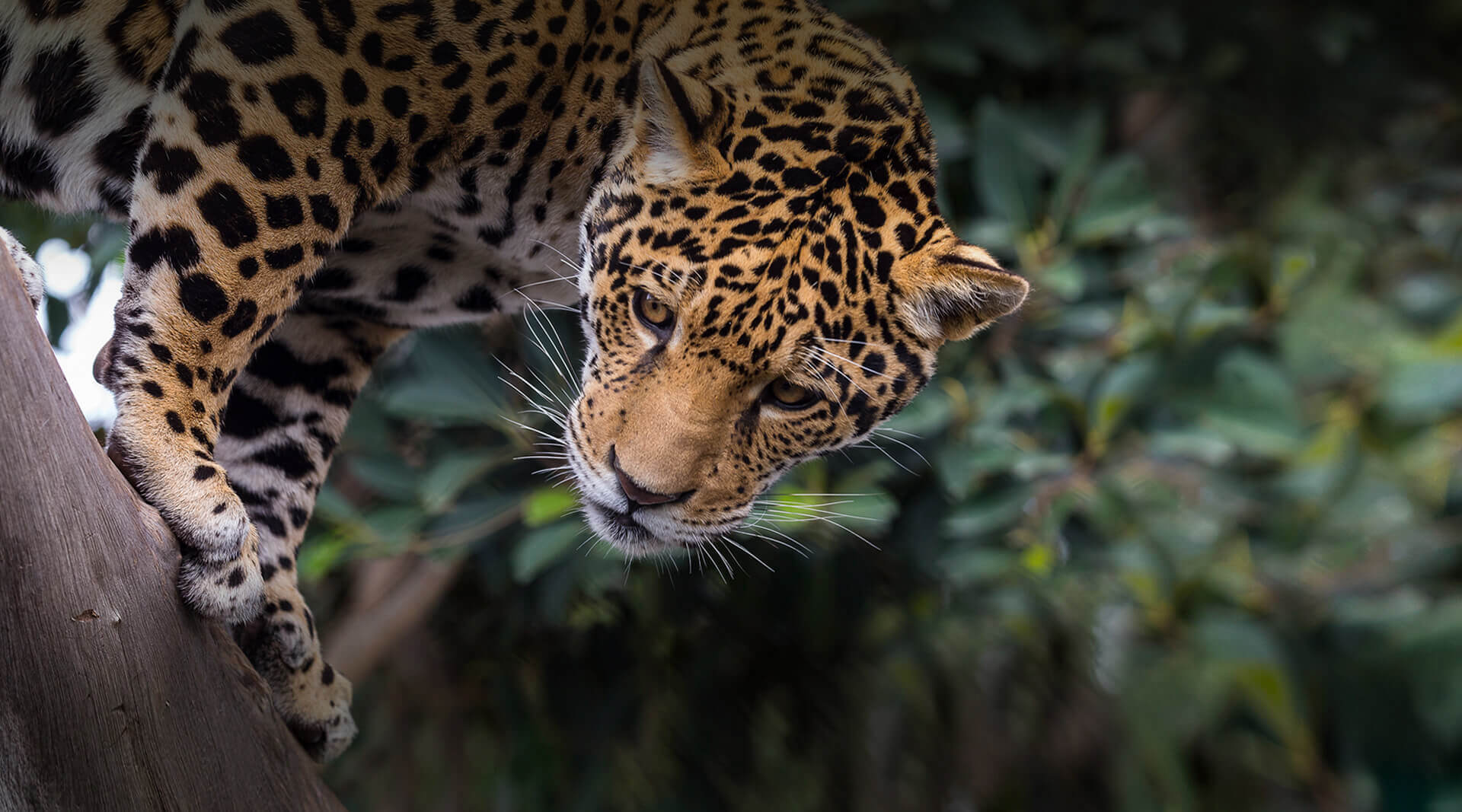Jaguars: More than Meets the Eye
IUCN Conservation Status: Near Threatened
The Amazonian rainforest is the largest remaining habitat for jaguars, with vast areas of intact forest still remaining. However, the Amazon is changing—rapidly. Logging, mining, farming, and ranching is fragmenting this unique ecosystem, and the roads built to support these activities are bringing people into contact with previously remote jungle habitat. For jaguars, that means less space, harder-to-find prey, and harder-to-locate mates. In many places, a growing human population competes with jaguars for wild prey. When food becomes scarce, jaguars sometimes prey on livestock. Ranchers often retaliate by shooting or poisoning the big cats. While commercial hunting for jaguar pelts has declined, there is again a growing demand for jaguar teeth, paws, and other products.
Working Together
Jaguars need vast areas to maintain viable populations. While Peru has a large network of protected areas, these alone are not sufficient to ensure the long-term survival of jaguars, and maintaining connectivity among these protected areas is an important part of a long-term conservation strategy. Solitary, elusive, and often nocturnal, jaguars have proven difficult to study, especially in dense or remote habitats. Trail cameras not only allow us to document the presence of jaguars, but we can identify individuals by their unique coat patterns, allowing us to count them. GPS satellite collars give us even more detailed information on their movements, and interactions among individuals.
We work with logging companies to help show the value that responsibly managed logging concessions provide as jaguar habitat. And we work with Rainforest Expeditions, a tourism company, to run one of the largest camera trap grids to study long-term population dynamics of jaguars in a protected area.
“Research and field work are critical to our mission to help save wildlife, but only if we can share the knowledge with our conservation partners around the world and inspire more people and organizations to support our efforts,” says Paul Baribault, President and Chief Executive Officer of San Diego Zoo Wildlife Alliance.
Combining Forces
San Diego Zoo Wildlife Alliance currently has two long-term monitoring sites—one in the Tambopata National Reserve and Bahuaja Sonene National Park, where we work closely with the Peruvian National Park Service, and one in two Forestry Stewardship Council-certified logging concessions. We also survey large areas of human-managed landscapes such as Brazil nut concessions, tourism concessions, and agroforestry concessions, in order to assess the population density of jaguars in those areas.
Despite the fact that the Amazon is the largest remaining habitat for jaguars, very little is known about their use of habitat, their home range size, and their diets. We use a range of novel technologies to look at the ecology of jaguars in the Amazon. GPS collars give us detailed data on the movement and area requirements of the species, while new genetic methods allow us to obtain information on the diet and population genetics from fecal samples. All this information is crucial for improving monitoring strategies and informing conservation efforts.
In Peru, many protected areas are surrounded by villages, agricultural lands and cattle ranches. This poses serious issues for wide-ranging species such as the jaguar, which easily move out of the park into populated areas where they encounter people and livestock. Improving the coexistence of local communities with wildlife is a rising priority for our efforts in these regions, as it’s critical to the overall survival of the species.

